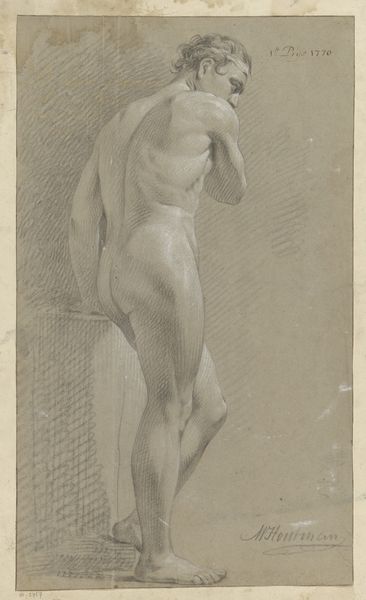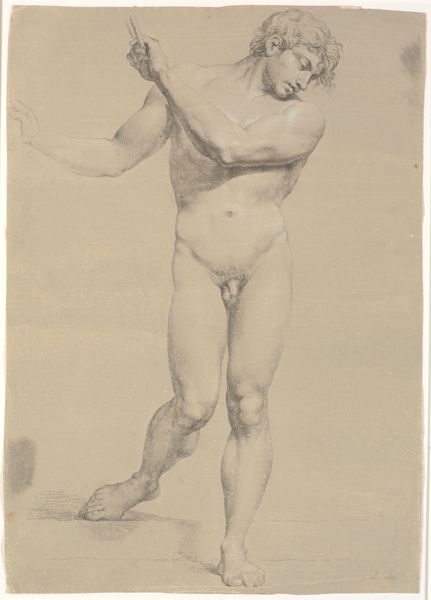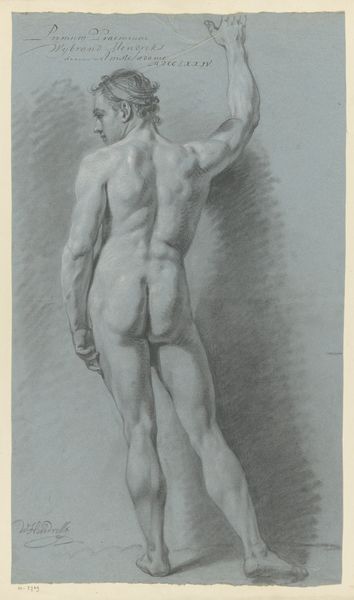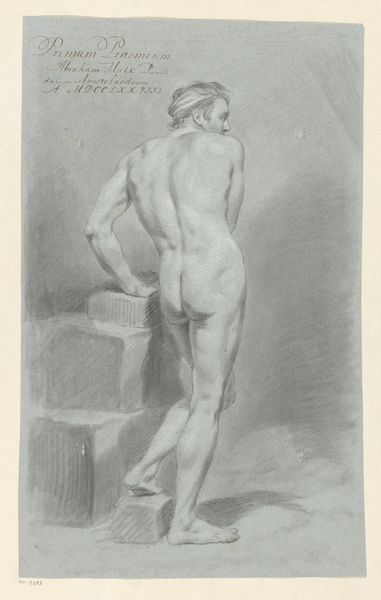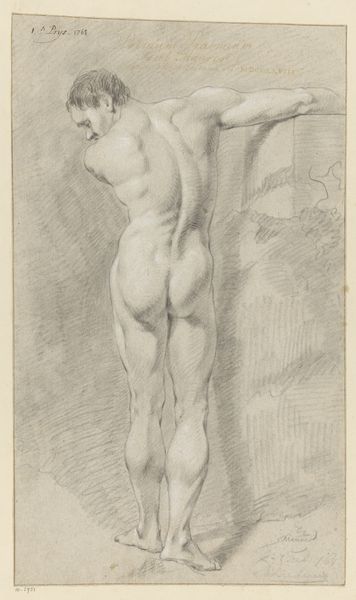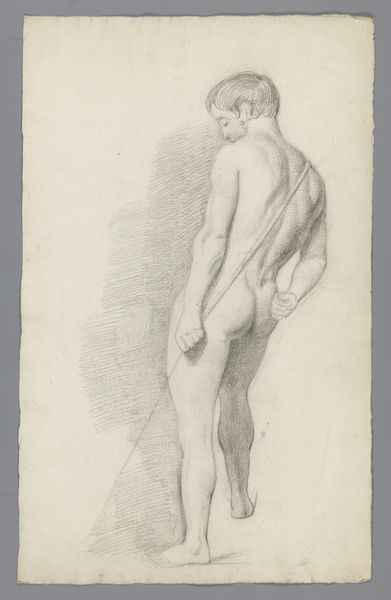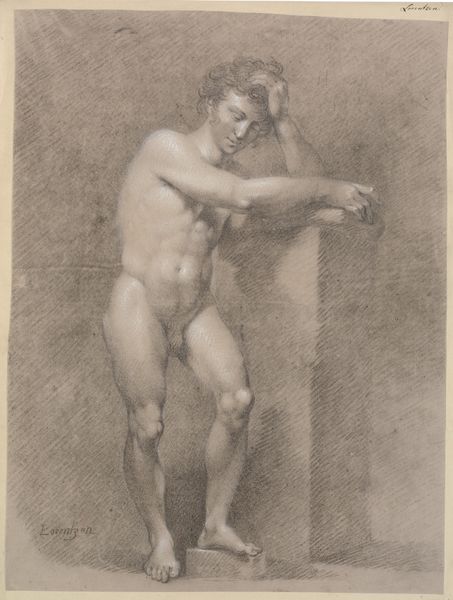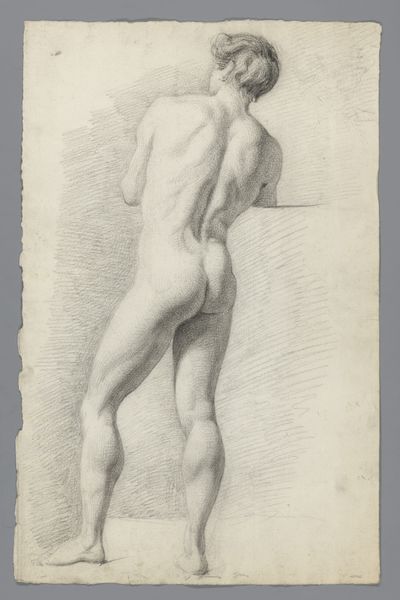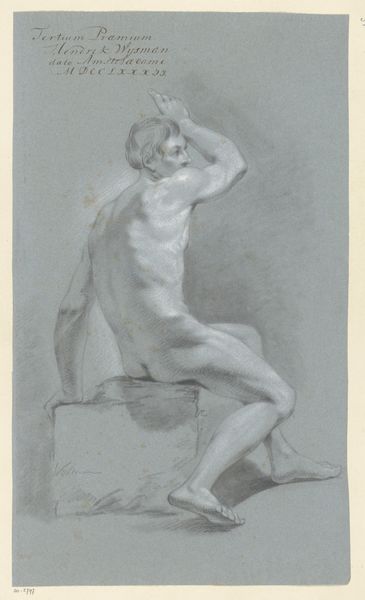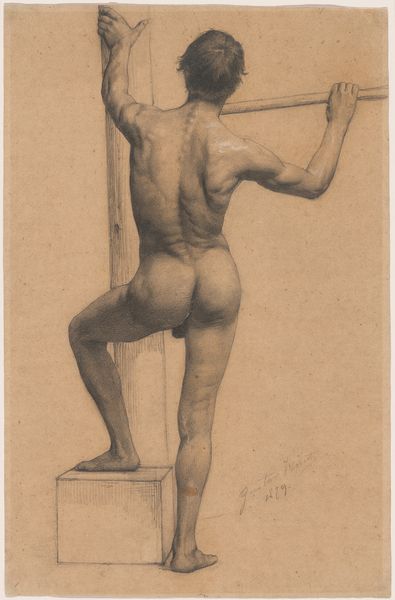
drawing, paper, dry-media, pencil, chalk, charcoal
#
drawing
#
charcoal drawing
#
figuration
#
paper
#
charcoal art
#
dry-media
#
pencil drawing
#
pencil
#
chalk
#
charcoal
#
academic-art
#
nude
#
realism
Dimensions: 435 × 262 mm
Copyright: Public Domain
Editor: Here we have John Downman's "Standing Nude from the Back," a drawing done with chalk, charcoal, and pencil on paper. The figure, rendered in a classical pose, feels a little melancholic to me. How do you read this piece? Curator: This drawing embodies the academic approach to art prevalent in the 18th and 19th centuries. Notice how the artist meticulously studies the human form, emphasizing anatomical correctness. This was crucial for artists seeking recognition within established art institutions like the Royal Academy. It was a sign of skill and serious artistic intent, as the public viewed such figures. Editor: So, these nude drawings weren't necessarily meant to be displayed as the final artwork? Curator: Often, no. While sometimes displayed in private collections, these studies primarily served as preparatory exercises. They were essential for history painting, considered the most prestigious genre at the time. By mastering the nude, artists demonstrated their ability to depict ideal beauty, a concept deeply rooted in classical antiquity and promoted by the Academy. Were they also pushing back against social and political norms? Editor: What do you mean? Curator: Think about it – publicly displaying nudes, especially of men, was often frowned upon, yet it was deemed essential for "high art". There's a tension there. This study almost feels like a necessary but potentially subversive act within the rigid structure of the art world. Editor: That’s a fascinating contradiction I hadn’t considered! I always thought it was purely academic, but it seems there's more at play. Curator: Precisely. Understanding art means understanding the social and institutional forces shaping its creation and reception. Art, in this context, becomes a social arena where established values were subtly questioned. Editor: Thank you. This reframes the work for me.
Comments
No comments
Be the first to comment and join the conversation on the ultimate creative platform.
